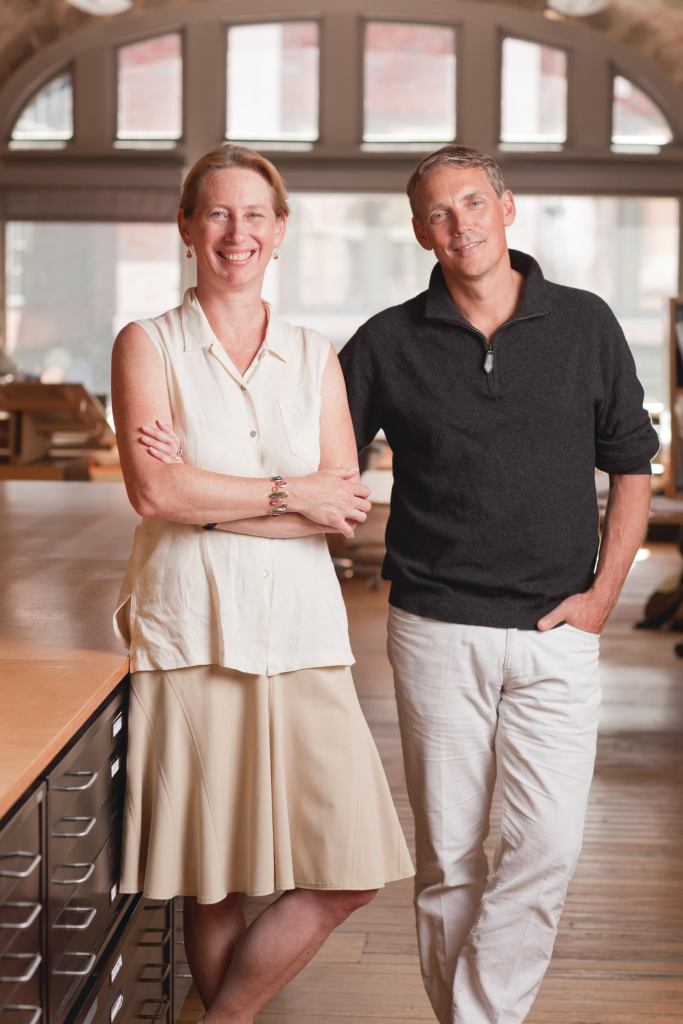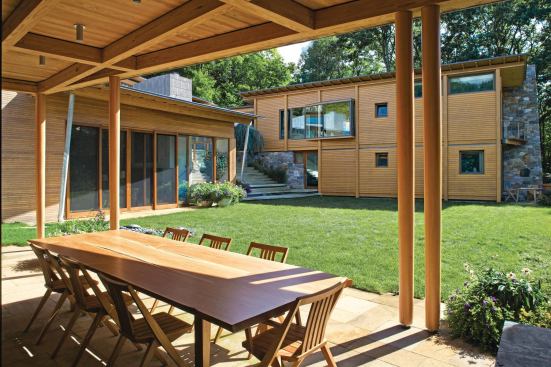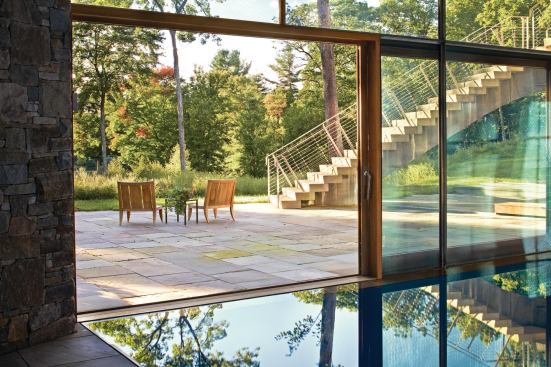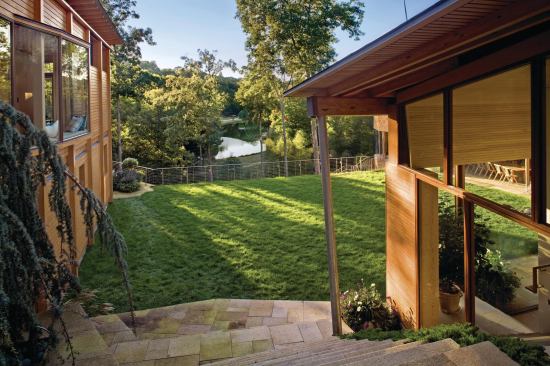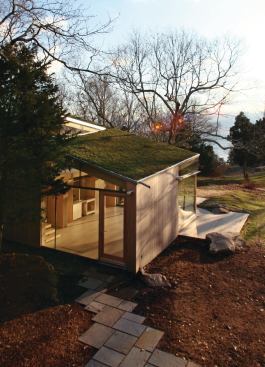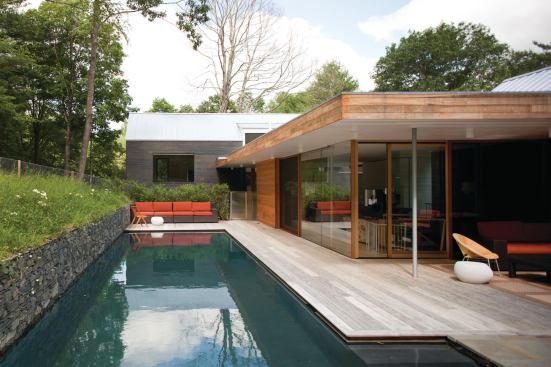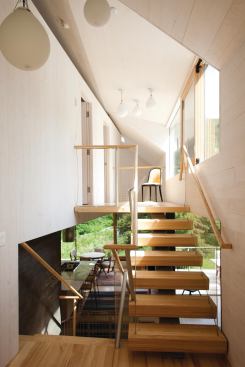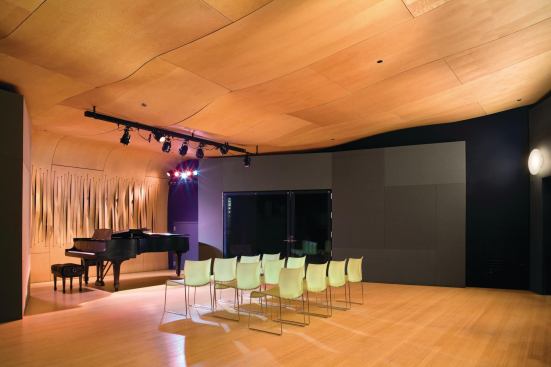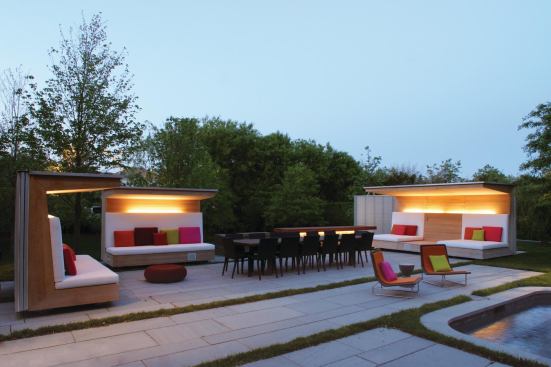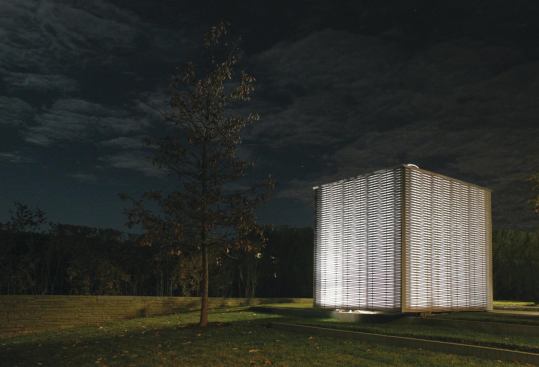Robert Benson Photography
The Hillside House by Gray Organschi is built on a forested slop…
Well-known and respected among the New Haven intelligentsia, Organschi and Gray are admired for their common touch. “Their work is not cosmopolitan, pretentious, or overly abstract; it’s real,” says Joeb Moore, AIA, principal of Joeb Moore + Partners Architects in Greenwich, Conn. “The way they promote their work is that it’s all about matter-of-fact materials and assemblies and the forms that emerge from them. But it’s more than that. There’s an earnestness, directness, and playfulness with the history of architectural form that anyone looking at their work will sense.”
An 875-square-foot cottage in Guilford, Conn., illustrates the blend of pragmatism and Yankee ingenuity embedded in their projects. Strict height and size limitations gave form to a precise accessory dwelling that does many things simultaneously: It edits out undesirable views while admitting others through glass corners and eaves, and a tipped up skylight creates head room in the loft. In addition to mass-produced sliding glass doors, its collage of assembly systems includes frameless glass templated and produced off-site, then glazed into a framing and trim system the architects designed. A plywood ceiling, folded like origami, was digitally designed to produce simple, flat planes that could be sheathed with conventional bamboo flooring. The architects also engineered an attachment system for installing the single-pitch sod roof on a traditional steep angle.
Their working philosophy goes beyond overt notions of sustainability. “There are so many things you can’t account for that make up the cost of building: How do you move the plywood from point to point? Is it better to paint the siding after it’s up or before it’s assembled?” Organschi says. “This is what big architecture firms are doing with huge projects like skyscrapers. When you bring that level of thought and detail to smaller-scale work, it results in a better building.” Yet, he adds, “the balancing act we’re working toward is not to overarticulate. We want to find the wonder of architecture without making the building feel like it’s trying to stand in the spotlight.”
The firm currently is thriving on a mix of residential and institutional work, including an eco-focused charter school. Says Gray, “It feels to us as though the practice of architecture is a very broad project, and we feel lucky to be involved with an endeavor that’s so complicated and a core group of people who are skilled. We’re not on the cusp of new stuff, but appropriately bringing our resources to a good mix of projects.”
Indeed, their interest in research will carry them along for the next 20 years. “What I like about them is that embedded in their thinking is a long-range project for their office,” Moore says. “They have a clear thesis statement about what their work is. That’s extremely difficult to do, and they are true to it.”
